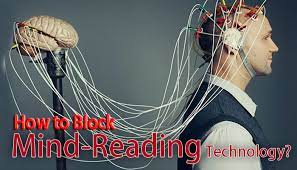In today’s rapidly advancing technological landscape, innovations have brought about remarkable developments in various fields. One such field is block mind-reading technology, which enables the interpretation and decoding of human thoughts. Although block mind reading technology holds promise for medical and scientific advancements, it also raises concerns regarding privacy, ethics, and personal freedom. In this article, we will explore the concept of block mind-reading technology, discuss the associated risks, and provide effective methods to block such invasive practices.
Understanding Mind-Reading Technology
What is Mind-Reading Technology?
block Mind-reading technology, also known as brain-computer interface (BCI), refers to the ability to read and interpret brain activity to understand a person’s thoughts, intentions, and emotions. Through the use of advanced algorithms and neuroimaging techniques, this technology can decode brain signals and translate them into meaningful information.
The Evolution of block Mind-Reading Technology
block Mind-reading technology has come a long way since its inception. Early forms of brain-computer interfaces were primarily used in medical research and rehabilitation. However, recent advancements have allowed for more sophisticated applications, such as controlling prosthetic limbs, aiding individuals with paralysis, and even enhancing cognitive abilities.
Applications of Mind-Reading Technology
The applications of mind-reading technology are vast and diverse. Medical professionals utilize block mind reading technology to diagnose and treat neurological disorders, while researchers employ it to gain insights into the human brain and cognition. In addition, mind-reading technology has found applications in the gaming industry, virtual reality experiences, and even marketing and advertising.
Concerns and Risks of block Mind-Reading Technology
While block mind-reading technology presents exciting possibilities, it also raises significant concerns about privacy, security, and ethical implications.
Invasion of Privacy
The invasive nature of mind-reading technology poses a serious threat to personal privacy. The ability to access an individual’s thoughts without their consent intrudes upon their mental privacy, potentially leading to the misuse of personal information and manipulation.
Potential for Misuse and Exploitation
Mind-reading technology could be exploited by individuals or organizations with malicious intent. The unauthorized access to thoughts and emotions can lead to psychological manipulation, coercion, or blackmail. Furthermore, the potential misuse of mind-reading technology in surveillance or espionage raises significant national security concerns.
Ethical Implications
The ethical implications of mind-reading technology are complex and multifaceted. Questions arise regarding consent, autonomy, and the right to mental privacy. Striking a balance between the benefits of this technology and the protection of individual rights requires careful consideration and regulation.
Understanding the Technology Behind Mind-Reading
Gaining a basic understanding of how mind-reading technology works is crucial in developing effective countermeasures. Familiarize yourself with the techniques and tools employed in mind-reading, such as electroencephalography (EEG) or functional magnetic resonance imaging (fMRI).
Techniques to Protect Your Thoughts
Use of Mental Shields and Visualization
Practicing mental shields and visualization techniques can help safeguard your thoughts. Imagine creating a protective barrier around your mind, preventing external access. Visualization exercises, such as envisioning your thoughts as being encrypted or hidden, can enhance this mental shield.
Incorporating White Noise and Sound Masking
White noise and sound masking can help disrupt brain signals and make it harder for block mind-reading technology to interpret your thoughts. Playing background sounds or utilizing white noise machines can create a cognitive barrier against invasive technologies.
Utilizing Faraday Cages and EMF Protection
Faraday cages are enclosed structures that block electromagnetic fields, including the signals generated by brain activity. Using Faraday cages or specialized EMF-blocking materials can shield your thoughts from external monitoring.
Practicing Mindfulness and Meditation
Mindfulness and meditation practices can enhance your mental focus and make it harder for mind-reading technology to decipher your thoughts. Cultivating a calm and centered mind can provide an additional layer of protection.
Enhancing Privacy in the Digital Age
Protecting your thoughts is just one aspect of maintaining privacy in today’s digital age. Consider the following steps to enhance your overall privacy:
The Importance of Strong Passwords and Encryption
Using strong, unique passwords and enabling encryption for your digital accounts can help prevent unauthorized access to your personal information. Employ password managers to generate and securely store complex passwords for various online platforms.
Securing Your Online Presence
Be mindful of the information you share online, particularly on social media platforms. Review and adjust your privacy settings, limit the data you share publicly, and avoid oversharing personal details that could potentially be exploited.
Protecting Your Smart Devices and IoT
Ensure the security of your smart devices by regularly updating their software, using strong passwords, and enabling two-factor authentication. Be cautious when connecting IoT devices to your home network, as they may serve as potential entry points for hackers.
Conclusion
As mind-reading technology continues to evolve, it is essential to consider the potential risks it poses to personal privacy and autonomy. By understanding the technology, adopting protective measures, and enhancing overall digital privacy, individuals can take proactive steps to safeguard their thoughts and maintain control over their mental privacy.
FAQs
Q : Can mind-reading technology read my thoughts accurately?
Mind-reading technology has made significant advancements, but it is not infallible. The accuracy of reading thoughts depends on various factors, including the technology used and the individual’s brain activity.
Q : Is mind-reading technology widely available to the public?
While mind-reading technology is being researched and developed, it is not yet widely available to the general public. Most applications of this technology are limited to scientific research and medical fields.
Q : Can blocking mind-reading technology have any side effects?
Blocking mind-reading technology using the techniques mentioned in this article does not have any known harmful side effects. However, it is important to consult with professionals or experts before using any specialized equipment or techniques.
Q :Are there any laws or regulations regarding mind-reading technology?
Currently, there are limited laws and regulations specifically addressing mind-reading technology. However, existing privacy laws may offer some protection against unauthorized access to thoughts and personal information.
Q : What are some alternative methods to enhance privacy without blocking mind-reading technology?
Alongside blocking mind-reading technology, individuals can focus on strengthening their digital security, practicing mindful sharing of personal information online, and advocating for privacy rights and regulations.








